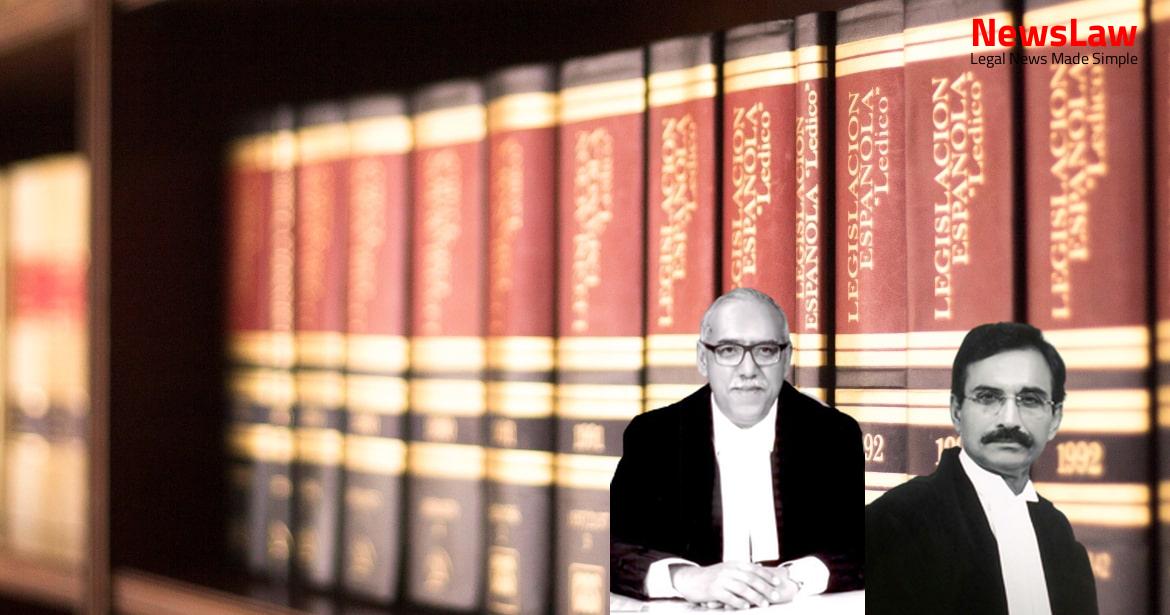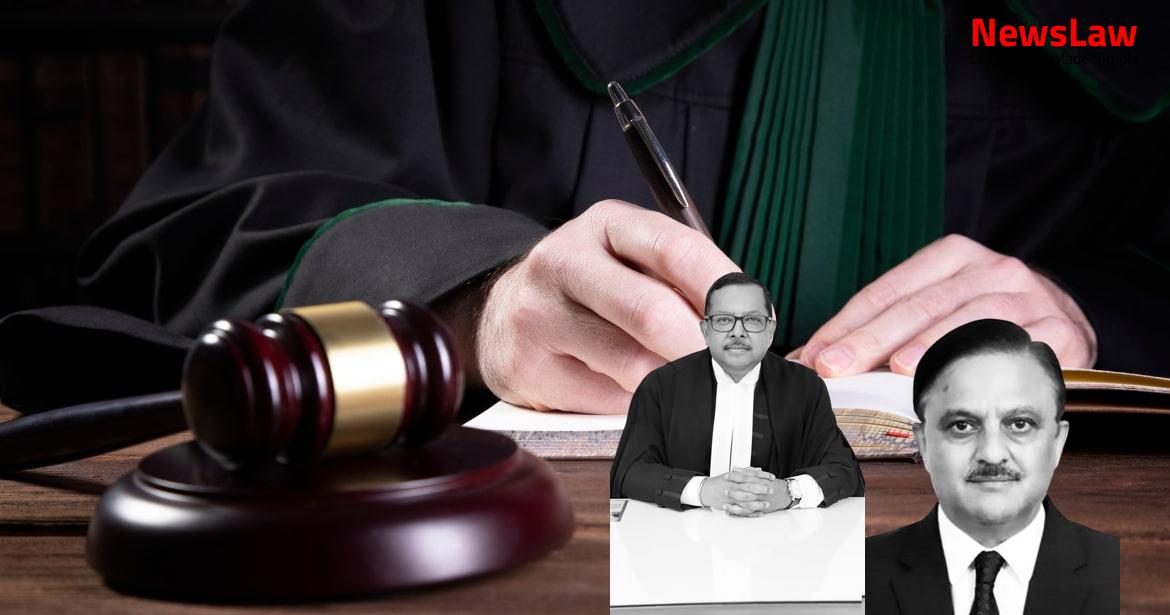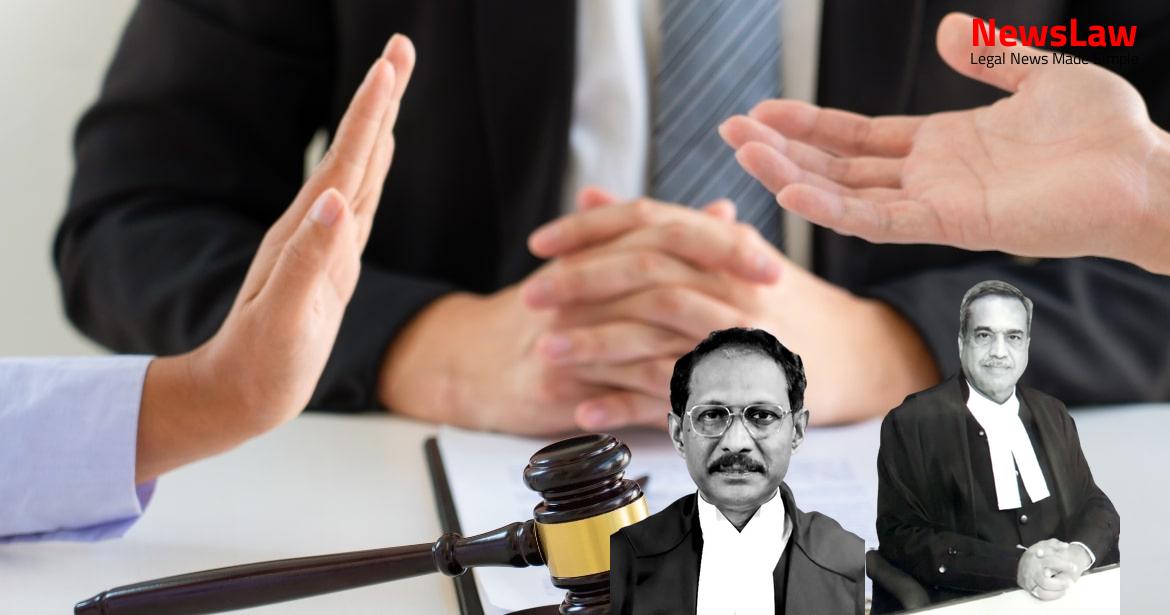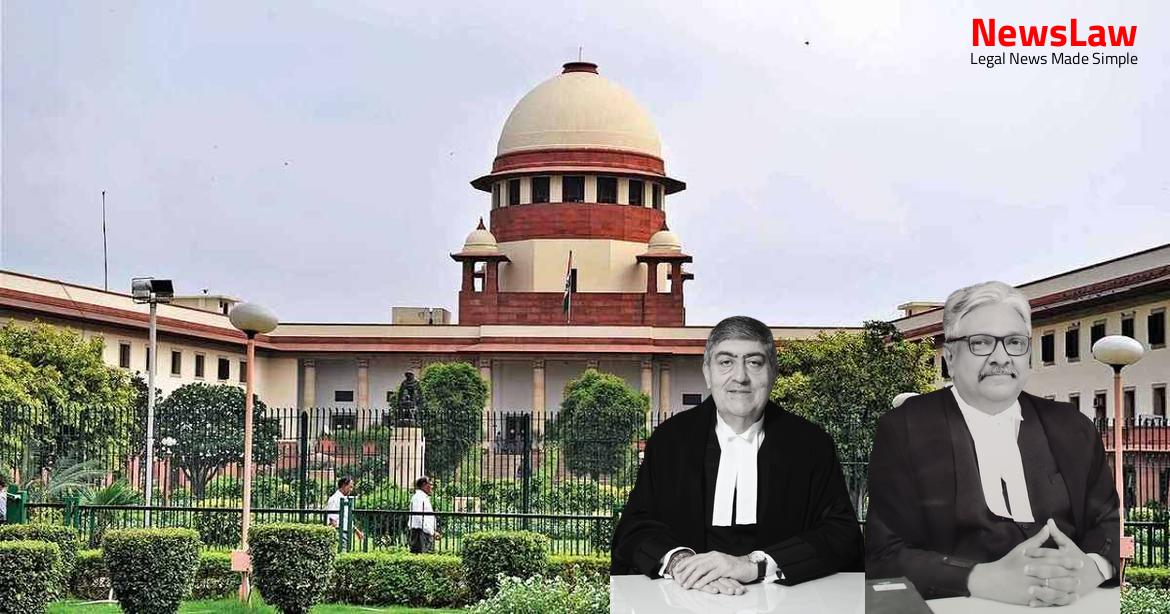In a landmark decision, the Supreme Court of India has delivered justice in the case of State of U.P. v. Ramji Singh and Ors. The judgment, upholding the conviction of the accused, sets a strong precedent for truth and accountability in legal proceedings. This case, marked by a tragic incident resulting in the death of Sarman Singh, highlights the unwavering commitment of the judiciary to uphold justice and ensure that the guilty are held accountable.
Facts
- Sarman Singh informed Babu Ram about the incident with accused Lakhan Singh in the morning of 17.06.1982
- Sarman Singh went to repair his agricultural implement with Babu Ram accompanying him
- Sarman Singh sat on a cot in the courtyard of Dasharath Singh’s house
- Sarman Singh had a heated altercation with Lakhan Singh regarding cultivation of a plot
- Babu Ram lodged a written complaint at the police station after the incident
- Accused Ramji Singh and Krishna Autar fired from their weapons outside Dasharath Singh’s house resulting in Sarman Singh’s death on the spot
- Accused Lakhan Singh threatened to kill Sarman Singh and incited others to do so
- Accused Laxman Singh, Lala Ram, and Virendra Singh attacked Babu Ram at the carpenter’s house with axes and pitchfork
- A case was filed under various sections of IPC against the accused
- During the appeal, three of the accused died
- The appeal abated for the deceased accused
- The relations between Sarman Singh and Lakhan Singh were strained due to a past election conflict
- The High Court set aside the judgment of the Trial Court
- There was no material contradiction between the medical evidence and the statement of the eye witnesses
- The presence of the eye witnesses on the spot was proved
- The prosecution explained why it had not examined one of the witnesses
- The prosecution proved the case against the accused beyond reasonable doubt
- Ramji Singh (A-2), Laxman Singh (A-4) and Lala Ram (A-5) were found guilty and sentenced to rigorous imprisonment for life and a fine of Rs.10,000/- each
Also Read: Parayil Sasi Murder Case: Supreme Court Restores Trial Court’s Judgment
Arguments
- Appellants contend that the Trial Court correctly found the presence of Babu Ram and Nand Kishore at the scene of the crime highly doubtful.
- Appellants argue that key witnesses were not examined and the ballistic report was not sufficiently proven by the prosecution.
- It is contended that the Trial Court’s decision was based on a probable view and should not have been overturned by the High Court.
- Appellants highlight contradictions in the statements of the witnesses and argue that being related to the deceased, they are biased and unreliable.
- The appellants claim that the FIR was ante timed and ante dated, evident from the delay in delivering the special report.
- The argument presented by Ms. Sansriti Pathak, counsel for the State of U.P., asserts that the Trial Court’s view was deemed as perverse.
- Ms. Sansriti Pathak highlighted that there is no contradiction between the medical evidence and the ocular evidence in the case.
- She emphasized that the time of recording of the FIR was accurately noted and is substantiated by the evidence on record.
- Additionally, she pointed out that all material witnesses have been examined in the case.
Also Read: The State v. Harinder Singh: Landmark Judgment Upholding Conviction
Analysis
- The complaint was written immediately after the occurrence.
- The medical evidence fully corroborates the prosecution story.
- The statements of PWs 1 and 2, the eye witnesses, are crucial.
- They reported the accused firing shots from the house entrance.
- The witnesses’ relations with the accused do not discredit their testimony.
- The enmity between the witnesses and accused does not imply false statements.
- The presence of key individuals like Dasharath Singh was not established.
- The medical evidence supports the ocular evidence with minimal contradictions.
- A delay in Section 157 compliance does not alone invalidate the prosecution.
- The FIR was recorded immediately after the occurrence.
- The site plan may not provide exact details due to scale limitations.
- The statement of key witnesses is vital for the case’s outcome.
- Eye-witnesses testified that two of the accused used guns.
- Ocular evidence was clear and supported by medical evidence.
- The negligence of the investigation team cannot be used by the defense to discredit the ocular evidence.
- The guns seized may or may not be the guns used in the crime.
Also Read: Judgment on Jharkhand Public Service Commission’s Civil Appeal
Decision
- Pending application(s) have been disposed of
- The appeal has been dismissed
Case Title: RAMJI SINGH Vs. THE STATE OF UTTAR PRADESH
Case Number: Crl.A. No.-001397-001397 / 2014



